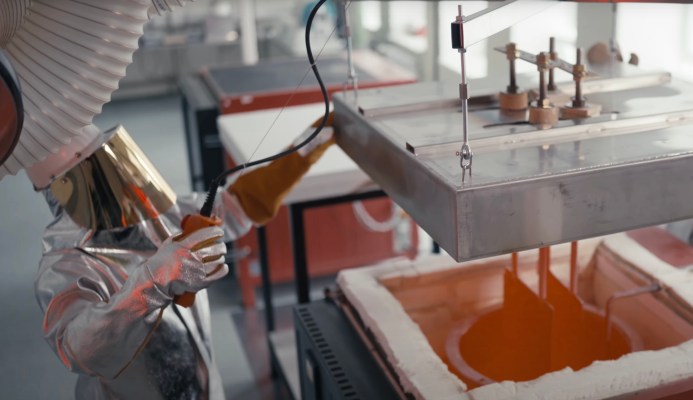Lithium might be the new oil, but it’s just one of several materials needed to make the batteries powering today’s electric vehicles.
There’s also cobalt, nickel and manganese, all of which have garnered their share of attention from commodities traders and policymakers alike. But one material that doesn’t get a lot of press and yet makes up 16% of a typical lithium-ion battery by weight is graphite, which is used for the anode or negative terminal.
China is the world’s largest supplier of graphite, controlling 75% of both synthetic and natural graphite supply chains, according to Benchmark Mineral Intelligence. Just last week, the Chinese Communist Party moved to restrict exports to the U.S. in response to the Biden administration’s decision to reduce Chinese firms’ access to advanced semiconductors.
“China basically overrules the market right now,” said Gary Urb, co-founder and CEO of Up Catalyst, a startup specializing in making graphite from carbon dioxide.
What’s more, graphite refined in China releases 17 tons of carbon pollution for every ton that’s produced, far more than lithium that’s been refined from brine. Given that 40% of a battery’s carbon footprint can come from highly polluting sources of graphite, reducing graphite’s impact can go a long way toward improving the sustainability of EVs.
To do that, researchers have been exploring ways to make graphite using carbon dioxide. Urb and his colleagues stumbled upon one such method almost by accident: They had created a method for producing graphite that could be used in hydrogen fuel cells. When they took that technology to different startup accelerators, the coaches there pushed them to look at other target markets.
As they studied the landscape, Urb and his team felt that batteries were a good fit because of graphite’s pollution problems and how critical minerals were becoming a pawn in the climate tech competition between the U.S., China, and Europe. As consumers clamored for EVs, demand for graphite skyrocketed.
“This is the fastest growing market right now,” Urb told TechCrunch+.
Urb and his co-founders started Up Catalyst in 2019 to refine their electrochemical reactor’s design. The reactor houses two electrodes and an electrolyte, just like the batteries the company’s graphite is designed for. (There’s also a catalyst to help speed up the reaction.) The electrolyte is a molten salt into which carbon dioxide is introduced. As electricity flows through the electrolyte, oxygen is stripped from the carbon in carbon dioxide and the carbon accumulates on the cathode. Once a cycle is complete, an electrode is removed and the graphite is taken off and purified.
In addition to producing graphite for batteries, Up Catalyst can tweak the basic process to also manufacture carbon nanotubes for paint or reinforced concrete, as well as graphite tailored to hydrogen fuel cells — its original target market.
The startup, based in Tallinn, Estonia, recently raised a €4 million seed round, TechCrunch+ has exclusively learned. The round was led by Extantia, with participation from Estonia’s state fund, SmartCap, and existing investors Sunly, Little Green Fund, Scottish Baltic Invest and UniTartu Ventures.
Urb said his company is using the cash infusion to hire additional staff and begin scaling the reactor design for industrial production. By the end of 2024, Up Catalyst hopes to have an industrial pilot online and aims to have the industrial-scale unit in operation by 2027. A second version of the industrial plant that will be able to produce 60,000 metric tons of graphite from 200,000 tons of carbon dioxide should be ready three years after that, Urb said.
Achieving that scale will be key to bringing costs down, Urb said. The company is hoping to hit price parity with existing sources. If Up Catalyst can make it happen, it shouldn’t have a problem finding buyers, especially if tensions remain high between China, the U.S. and the EU.
China may have a lock on today’s graphite supplies, but carbon dioxide is everywhere, and people are desperate to find a use for it.
